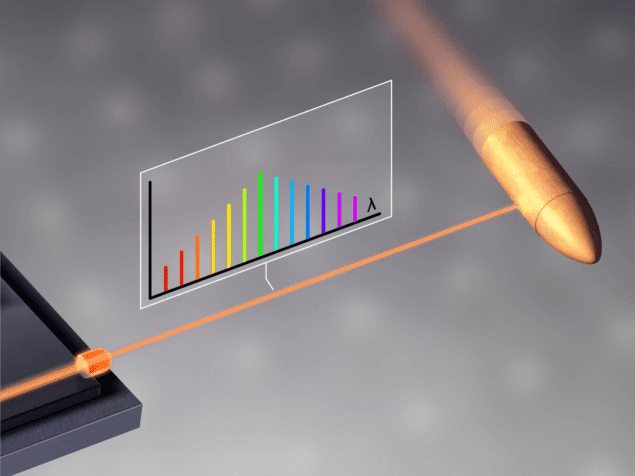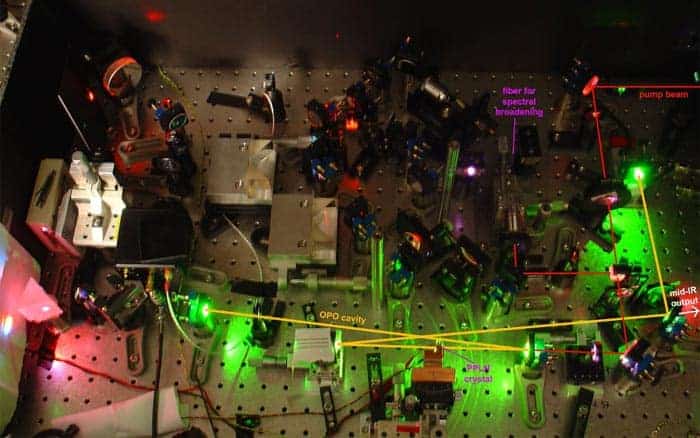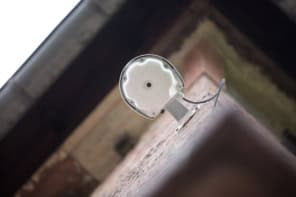
A new laser system that can make precise measurements of distance at record-breaking speed has been unveiled by researchers at Germany’s Karlsuhe Institute of Technology (KIT) and the Federal Institute of Technology in Lausanne (EPFL) in Switzerland. Made using optical frequency combs, the system can measure the surface profile of a speeding bullet.
Modern technologies such as aerial drones, observation satellites, self-driving cars and manufacturing robots need to make rapid, highly-accurate measurements of distances to surrounding objects. Currently, such measurements are made by laser-based light detection and ranging (LIDAR) systems, but even these are struggling to keep pace.
Optical teeth
To construct a faster ranging system, the KIT and EPFL scientists exploited solitons, which are wave packets consisting of laser light that maintain their shape as they propagate. These solitons can take the form of optical-frequency combs, with “teeth” of light with precisely defined wavelengths, spaced at regular intervals (see figure). The scientists realized that if one comb was fired at and reflected off a moving object, it would interfere with another, newly-produced comb. With knowledge of the comb structure, the phase difference of the superimposed teeth would reveal the distance travelled by the first comb.
To create the combs, the scientists fabricated circular, micron-scale pieces of high-quality silicon nitride, which loses very little light. When fed with continuous-wave lasers, the refractive index of this material responds to changes in electric field. Called the Kerr effect, this causes light waves at certain Kerr frequencies to resonate, producing the optical-frequency combs suitable for the team’s experiment.
“We have developed low-loss optical resonators, in which extremely high optical intensities can be generated – a prerequisite for soliton frequency combs,” explains Tobias Kippenberg of EPFL. “These so-called Kerr frequency combs have rapidly found their way into new applications over the previous years. “
Record breaking
To test their system, the researchers fired a bullet at a speed of 150 m/s and aimed a comb-producing laser perpendicular to its trajectory. By continuously observing comb interference patterns, they generated a 3D image of the bullet. “We managed to sample the surface structure of the projectile on-the-fly, achieving micrometre accuracy,” comments KIT’s Christian Koos. “To this end, we recorded 100 million distance values per second, corresponding to the fastest distance measurement so far demonstrated.”

Frequency comb helps kill dangerous bacteria
While the measurement was made at both high precision and high speed, the range of the technique is only around 1 m – a value they wish to increase in the future. Additionally, their system is rather large and generates a huge amount of data. The researchers will now work towards producing a more compact design, which they believe could one day fit inside a matchbox.
The LIDAR system is described in Science.



